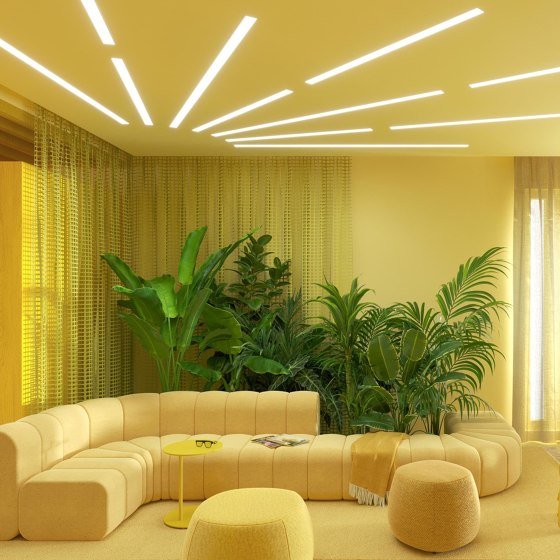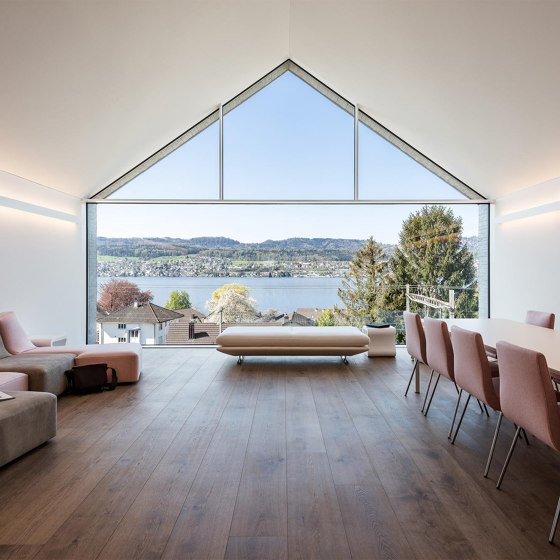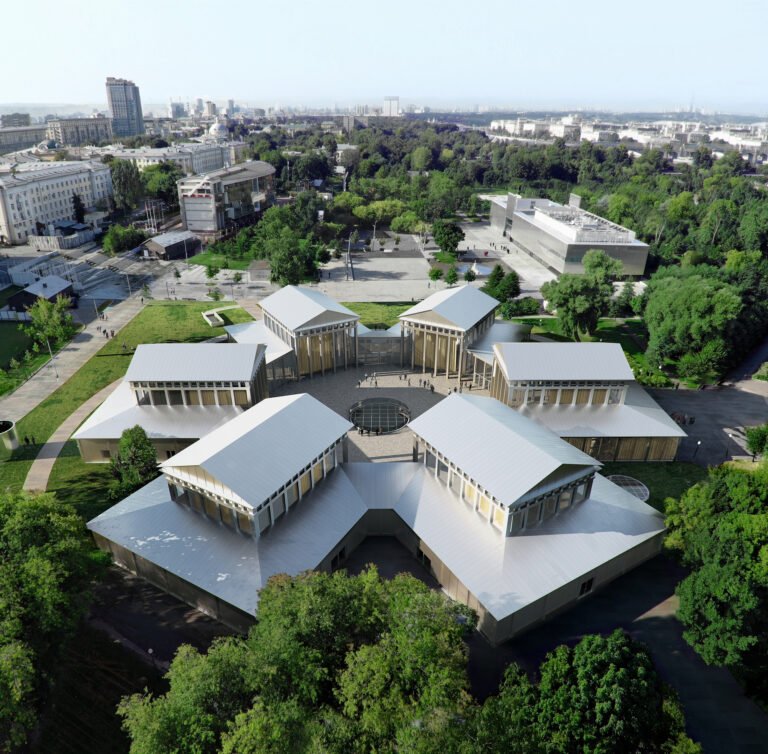GBBN Designs Inspiring Modern and Inclusive Space for the Cincinnati Ballet
Cincinnati Ballet: Margaret & Michael Valentine Center for Dance – Cincinnati Ballet knew they were on the precipice of substantial growth, but they were so constrained by their previous location that it was hard to imagine what that would look like. So, when they came to us, we talked to everyone who used the space – everyone who danced there, who trained there, who worked there. They were all on the same page. They wanted to maintain the high caliber of dance and rigorous instruction/discipline. They wanted room to grow. And they wanted to breakdown barriers associated with classical ballet (regarding race, ethnicity, body shapes, and physical abilities). They wanted a modern, inclusive space that anyone could see themselves in.
Architizer chatted with Marcene Kinney, AIA, Principal, Director of Arts at GBBN to learn more about this project.
Architizer: What inspired the initial concept for your design?
Macrene Kinney: We really wanted to do two things with the design. On the one hand, we wanted to break down barriers – to acknowledge that dance is this fundamentally human experience, and that it’s for everyone. This shaped the choice of location. It was significant that it sits within a diverse community. It also drove the design’s effort to open the building up, so people could see into the studios and envision themselves there. At the same time, all that glass opens up incredible views of downtown Cincinnati, Eden Park, and the surrounding hills while flooding the space with natural light.
On the other hand, the design sought to express the grace and power of dance. The site was quite challenging. It’s oddly shaped and steeply graded, but we were able to cantilever pieces of the building and stack the studios in a way that is expressive of the energy of dance itself.

© Brad Feinknopf
What do you believe is the most unique or ‘standout’ component of the project?
I’m going to give two answers, but they’re closely related: the light and views. Everyone who uses the building talks about the light, directly or indirectly. They describe natural light cascading down through every space or they gesture towards the beautiful, vast space that surrounds them. Most studios feature 12-foot windows and glass interior walls – though, the event space features a full glass wall that opens a view of downtown. So, light really does just stream through the space, making it feel spacious and alive. Its quality also changes throughout the day, moving from pink and orange tones to a clearer light and back.
The same strategy opens up incredible views of downtown, Eden Park, and the surrounding hills. It also opens up internal views, inspiring novice dancers with glimpses of professionals at work and reminding professional dancers of their own path.

© GBBN
What was the greatest design challenge you faced during the project, and how did you navigate it?
I mentioned this before, but the challenge was the site itself. Though it sits near the center of the city (on a major corridor), it remained undeveloped for a longtime, because it was steep and strangely shaped.
The steep grade really challenged us to consider how we could make the most of the site. We ended up pushing the studios out from the center of the building (two bars breaking from a pivot point to take better advantage of surrounding views). This required the addition of stilts to support the edge of studios as they extended beyond the floors below them. The result not only opened up more communal space at the center of building, but it’s really quite elegant. It’s delicate and powerful, and can’t help but to remind me of the way a ballet dancer plants their toe as they accomplish an incredible feat of athleticism.

© GBBN
How did the context of your project — environmental, social or cultural — influence your design?
We started working with the Cincinnati Ballet very early, so we looked at eight different sites to find the right one. Part of the value of this site is that it faces I-71 (just above downtown), so it’s a high-profile illustration of the city’s investment in the arts.
But its immediate context is equally important. The Cincinnati Ballet’s new home is located within an emerging arts district on the edge of a diverse neighborhood, so the location helps communicate their commitment to making dance for everyone. The Cincinnati Ballet also really wanted to make sure that their new home was a resource to their neighbors, so they worked closely with the community to figure out how to open their doors to the neighborhood. The most obvious expression of this is the “front porch” – a partially-covered, outdoor space for hosting community events.

© GBBN

© Brad Feinknopf
What is your favorite detail in the project and why?
I really love the way the building acknowledges that dance is taught and communicated visually. The building continually reinforces the visual connection of people and activities to each other through peek-a-boo moments. There is a portal that is cut through the lobby ceiling that provides a particularly good example of this. The shape of the portal itself feels dynamic, but it also allows you to see the dancers working at the barre in the studio above. It’s just one of the many moments where the building shows that the energy of dance can’t be contained within a single room.

© Brad Feinknopf

© Brad Feinknopf
How have your clients responded to the finished project?
The response to the building has been so gratifying. Dancers, instructors, leadership, and staff have all celebrated the way the light pours in through the windows and cascades through the space. Margaret Valentine, who was a major funder for the project described it as “matching the vision of the ballet: the energy and elation of what the building represents.”
The dancers describe the space as an inspiration, as something you “want to live up to it.” One of my favorite responses came from a dancer who told me that they will arrive early for their training sessions, so they get favorite position on the barre – the place with the view they want to take in as they train. It’s also been the sort of project that you just hear good things about when you’re out and about, when you meet someone who is taking a movement class there. It’s been so positive.

© Brad Feinknopf
Team Members
Marcene Kinney, Daniel Luegering, Steve Karoly, Greg Pinter, Matthew Schottelkotte
Consultants
Messer Construction (CM), dbHMS (MEP), Schaefer (Structural), Kleingers (Civil Engineer), Kirkegaard (Acoustics), Schuler Shook (Theater Planning & Lighting Design), REALM (Landscape)
Products / Materials
Terreal North America, NeXclad 14, Terracotta Tile, Mediterranean Blue (gloss); Robbins Dancefloor (flooring); Pure Edge Lighting (lighting)
For more on Cincinnati Ballet: Margaret & Michael Valentine Center for Dance, please visit the in-depth project page on Architizer.
Cincinnati Ballet: Margaret & Michael Valentine Center for Dance Gallery




